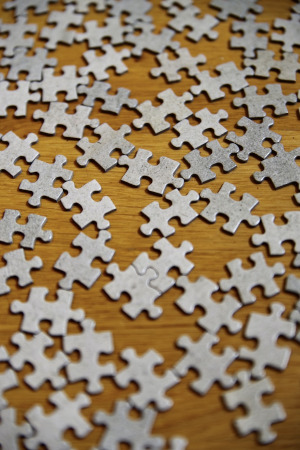
Pattern recognition is a crucial skill that sets successful speed puzzling participants apart. You might be a speed puzzler and still wonder just how to make better times. Well, consider this technique for boosting your game. Developing this ability takes practice, patience, and a keen eye for details.
We Use Pattern Recognition Every Day
What I learned about pattern recognition is that we all use it, but we haven’t perfected it. What I mean is we see patterns in life and recognize routines, but we call that life. Pattern recognition is probably the more official term. And frankly, knowing how to use it and practice it further will help you become a successful speed puzzler.
Table of Contents
Before you consider speed puzzling, ask yourself what you might use pattern recognition daily in your own world. I bet you might say finding your home in the subdivision or locating your favorite quilt on the shelf. These are basic examples, but real time results.
Now what about speed puzzling? If you can cultivate and utilize pattern recognition to secure victories you might find yourself delighted in the effort you take to explore the way you speed puzzle at major puzzle competitions.
How do You Practice with Pattern Recognition?
1. Start with Simple Puzzles as Building Blocks.
Begin your journey by working on simpler puzzles with distinct patterns and easily recognizable elements. This lays the foundation for honing your pattern recognition skills without overwhelming complexity and allow you to arrange pieces to finish fast.
2. Focus on Edge Pieces as a Strategic Beginning.
Concentrate on the edge pieces first, as they provide a structured starting point. By identifying patterns along the edges, you create a framework that guides the overall puzzle-solving process.
3. Gradually Increase Complexity for Progressive Challenges.
Move on to more complex puzzles as you become comfortable with simpler ones. Gradually introducing additional challenges helps your brain adapt to recognizing intricate patterns and relationships between pieces.
4. Analyze Color and Texture for Visual Distinctions.
Train your eyes to discern subtle color variations and textures on puzzle pieces. This skill becomes particularly valuable when working on puzzles with intricate images, as you learn to recognize details that guide connections.
5. Experiment with Different Themes for Diversify Experience.
Work on puzzles with diverse themes, from landscapes to abstract designs. Each theme presents unique patterns, broadening your repertoire of recognizable elements. This diversity enhances your adaptability in speed puzzling competitions.
6. Utilize Peripheral Vision to Expanded Awareness.
Train your peripheral vision to capture details beyond your immediate focus. This allows you to simultaneously observe multiple sections of the puzzle, identifying patterns and connections without having to shift your gaze constantly.
7. Practice Regularly for Consistent Engagement.
Like any skill, pattern recognition improves with consistent practice. Set aside dedicated time for speed puzzling regularly, exposing yourself to various puzzles to reinforce and refine your ability to recognize patterns swiftly.
8. Analyze Successful Puzzlers to See it in Action.
Watch experienced speed puzzlers in action. Analyze how they approach puzzles, identify patterns, and make connections. Observing seasoned puzzlers provides valuable insights that you can incorporate into your own strategy.
9. Embrace Trial and Error as Learning Opportunities.
Don’t shy away from making mistakes. Embrace the trial-and-error process, as it’s an integral part of developing pattern recognition. Analyze your errors, understand the patterns you missed, and use them as learning opportunities.
Make The Effort to Change Your Time
It might take a little time, but if you put in the effort, your speed puzzling times will start to change. The idea is by systematically incorporating these strategies into your practice routine, you’ll develop the ability to swiftly identify patterns, connect pieces efficiently, and increase your chances of emerging victorious in speed puzzling competitions. It worked for me and I hope it works for you too!
